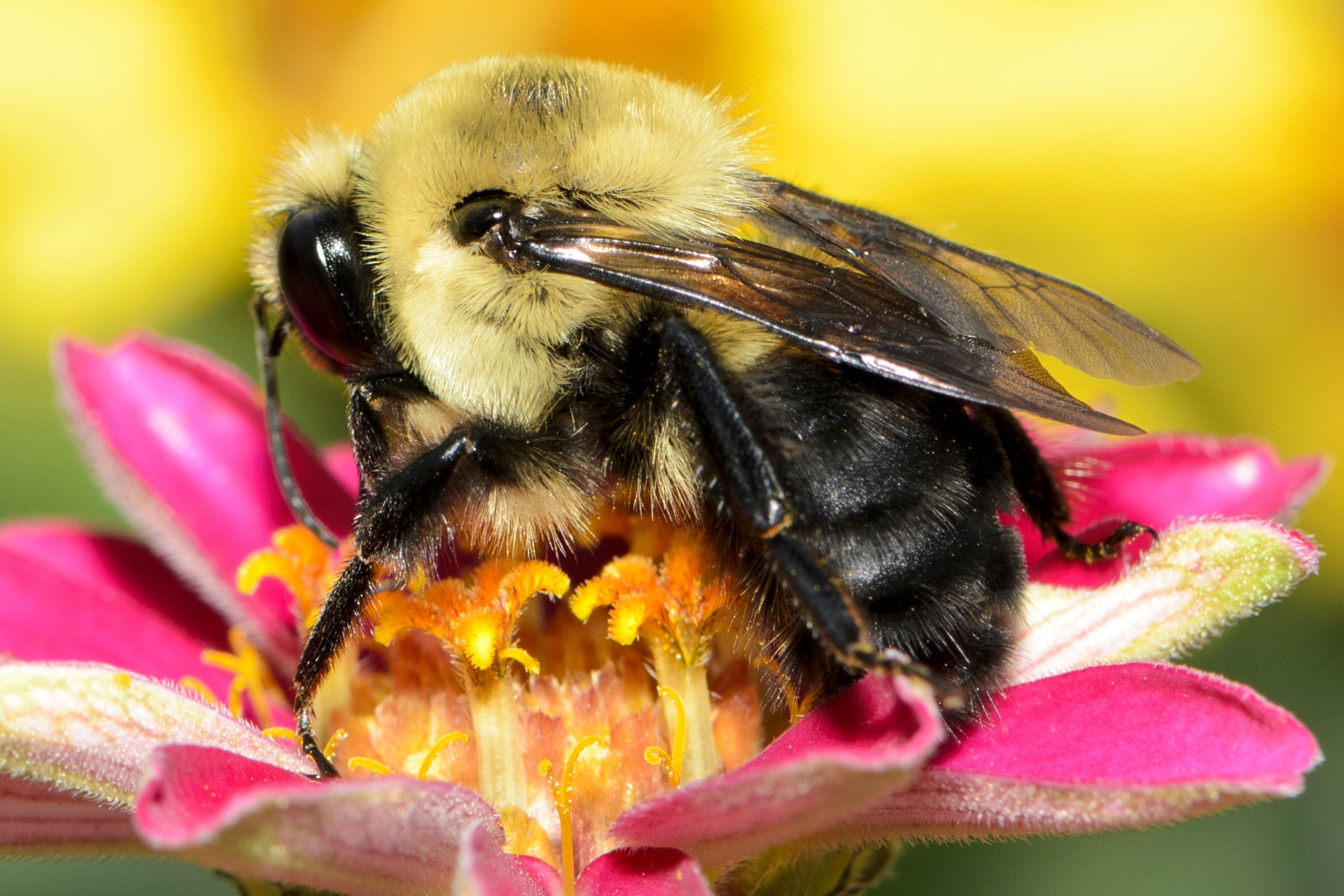American bumblebee
(Bombus pensylvanicus)

Description
Bombus pensylvanicus, the American bumblebee, is a threatened species of bumblebee native to North America. It occurs in eastern Canada, throughout much of the Eastern United States, and much of Mexico. Once the most prevalent bumblebee in the southern United States, populations of Bombus pensylvanicus have decreased significantly in recent years, including in its scientific namesake state of Pennsylvania where its numbers are considered critically low. Overall, the population has dropped nearly 90% in just the last 20 years. Bombus pensylvanicus tends to live and nest in open farmland and fields. It feeds on several food plants, favoring sunflowers and clovers, and functions as a pollinator. Bombus pensylvanicus belongs to the order Hymenoptera (consisting of ants, wasps, bees, and sawflies), the family Apidae (consisting of Cuckoo, Digger, Carpenter, Bumble, and Honeybees), the Subfamily Apinae (consisting of Honey, Orchid, Bumble, Long-horned, and Digger Bees), and the genus Bombus (consisting of bumblebees). Within Bombus, B. pensylvanicus belongs to the subgenus Thoracobombus, which includes species such as Bombus armeniacus, Bombus pauloensis, Bombus dahlbomii, Bombus fervidus, Bombus humilis, Bombus morio, Bombus muscorum, Bombus pascuorum, Bombus pomorum, Bombus ruderarius, Bombus sylvarum, and Bombus transversalis. Bombus pensylvanicus is sometimes mistaken for B. terricola or B. auricomus, but its closest relative is Bombus sonorus, found in Mexico and Arizona. Scientists sometimes treat Bombus sonorus as a subspecies of Bombus pensylvanicus, although each species maintain differences in male genitalia. Intermediate individuals of B. pensylvanicus and B. sonorus have been found in areas of geographic overlap, but further evidence is needed to distinguish whether B. sonorus is a subspecies of B. pensylvanicus. Bombus pensylvanicus is a widespread species, characterized as long-tongued. In comparison to its similar species B. sonorus, B. pensylvanicus has a darker color pattern and is located in the eastern United States. Characteristics of B. pensylvanicus include: a yellow thoracic dorsum, a black posterior, 3 initial alternating black and white tergal segments, a long and lanky malar space, and short hair. These characteristics resemble those of B. fervidus and B. auricomus, leading to confusion among species. B. pensylvanicus is similar in color and range to Bombus fervidus.
Taxonomic tree:







